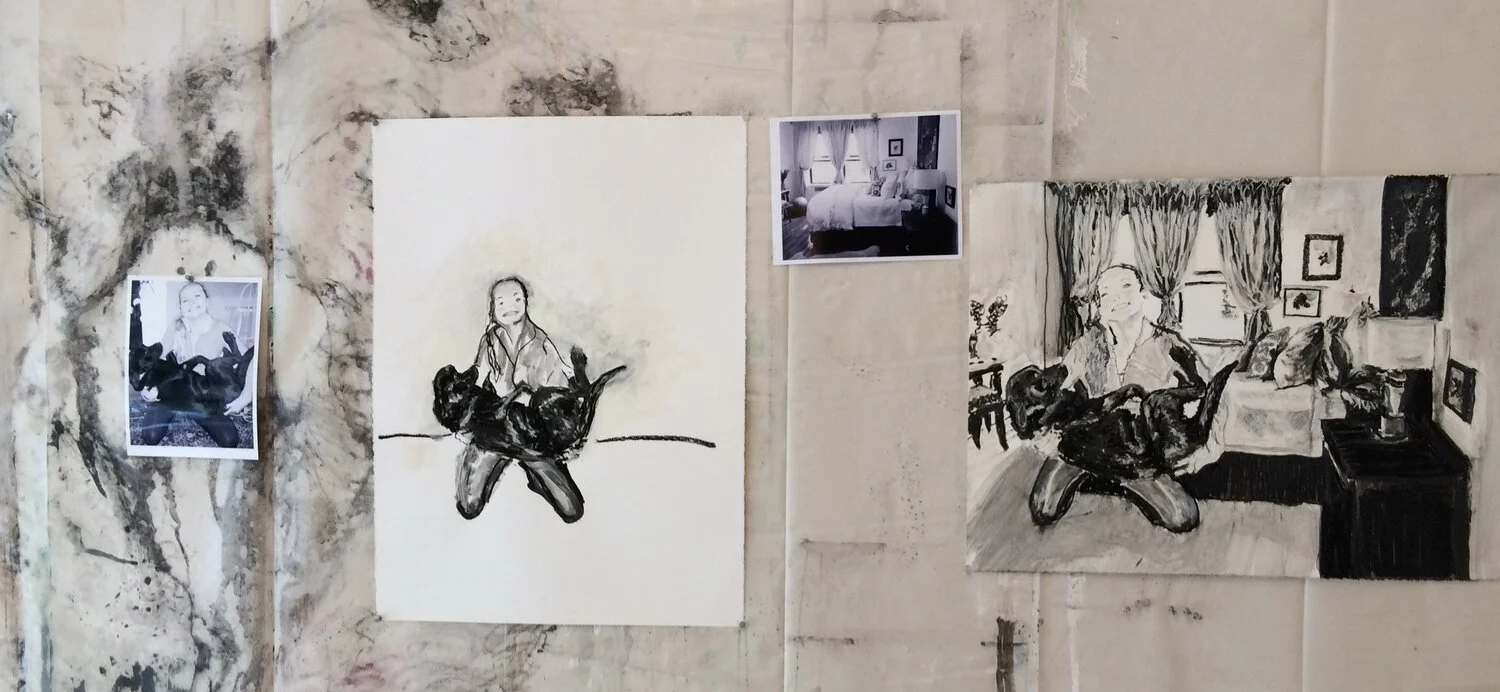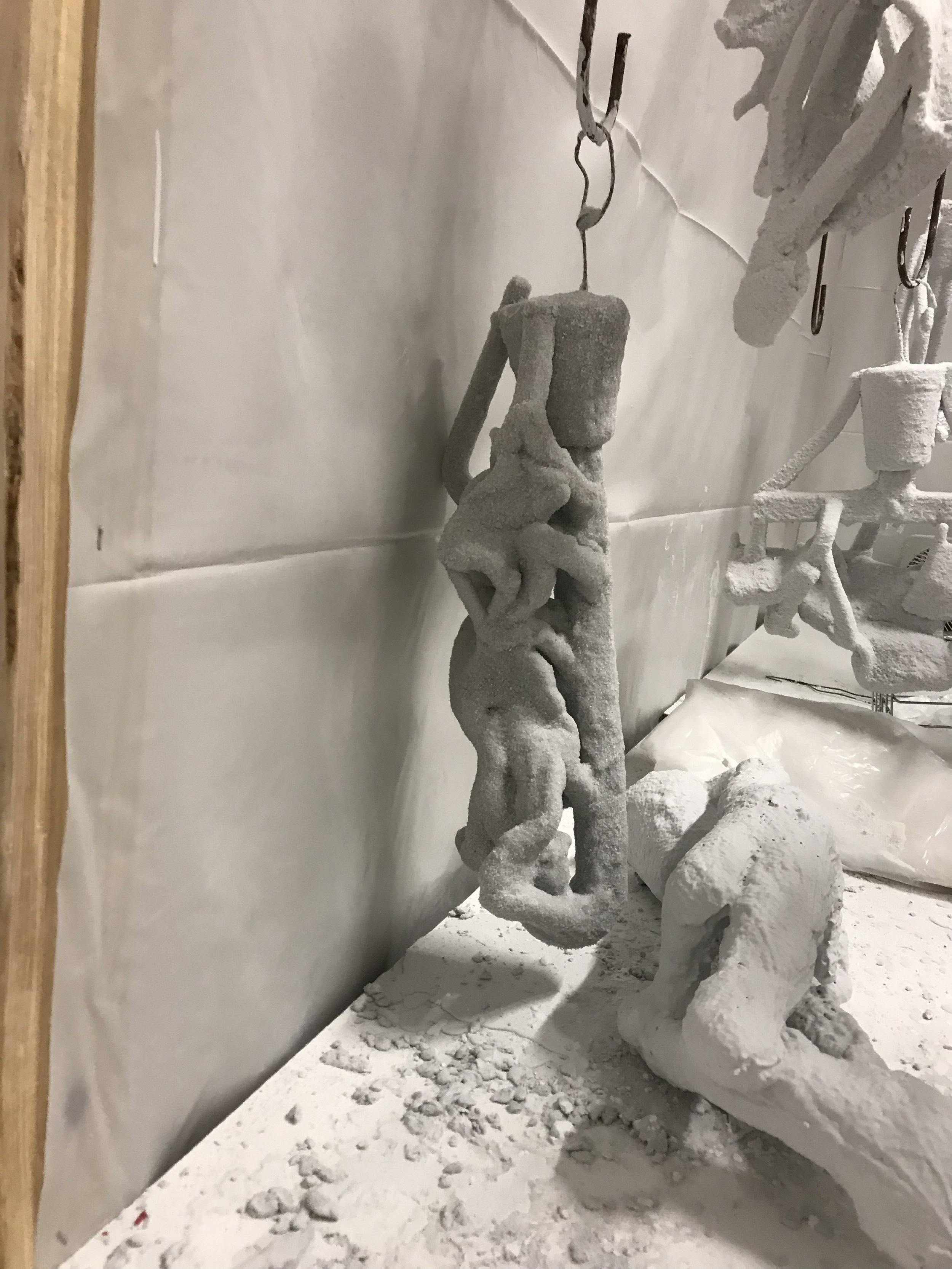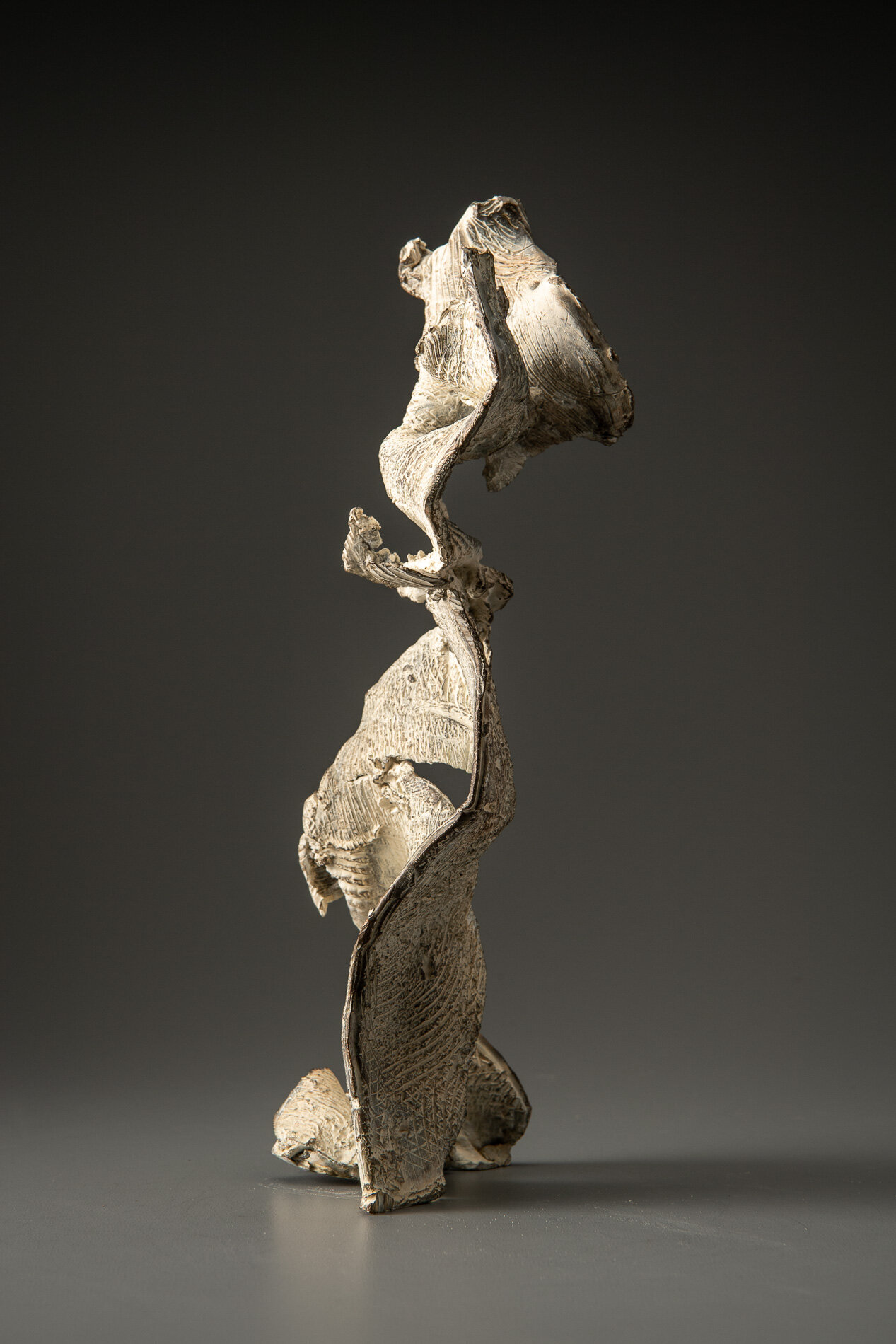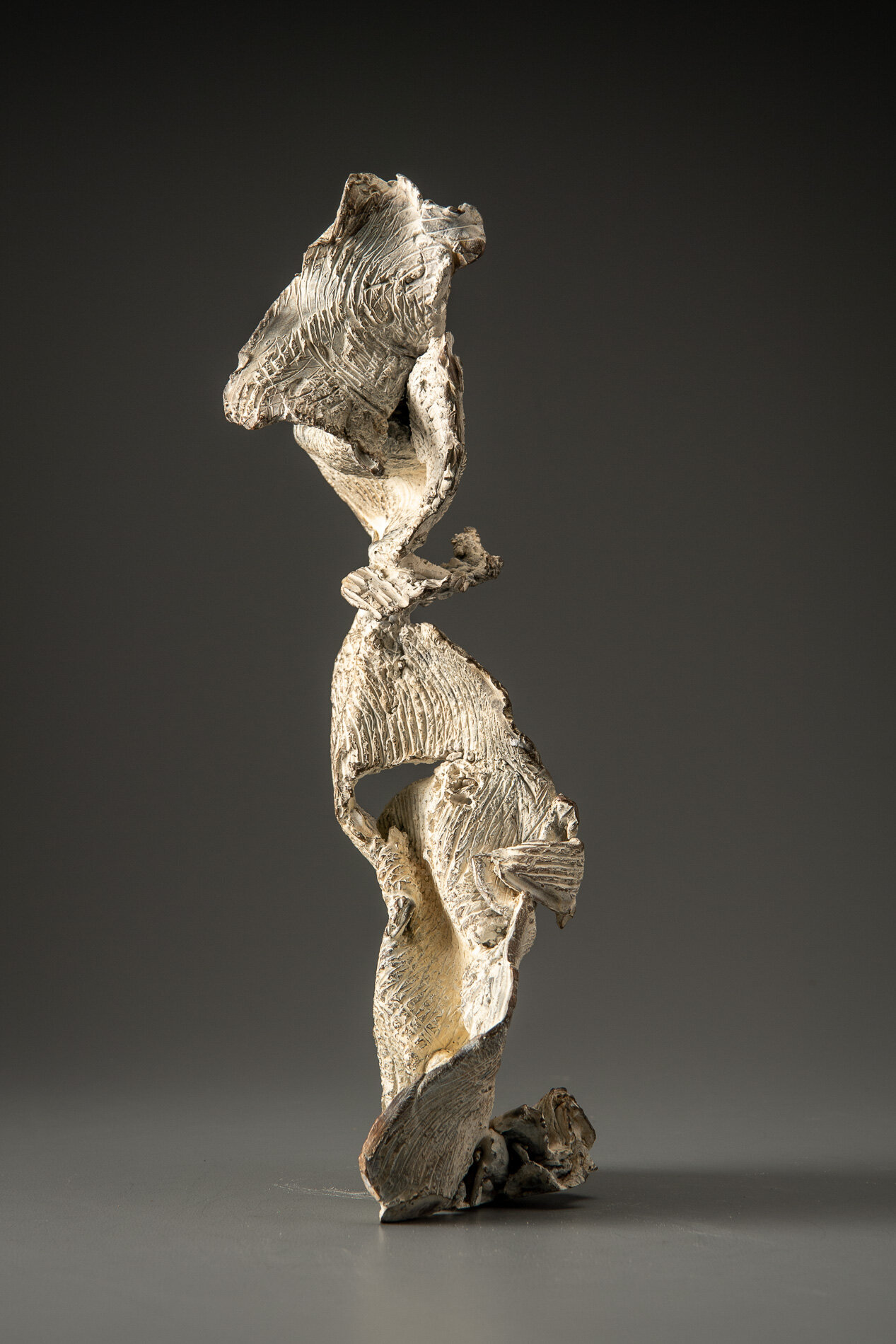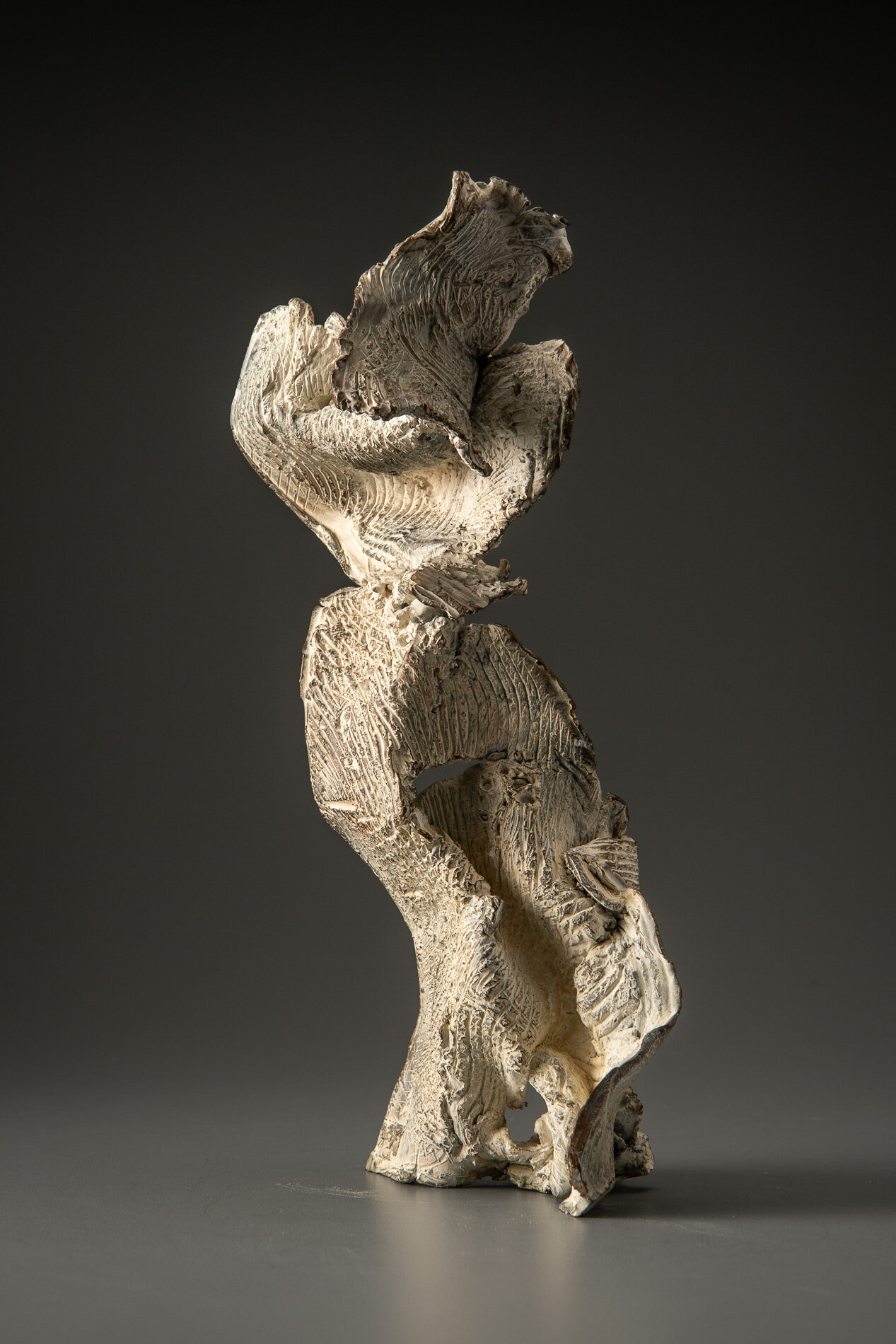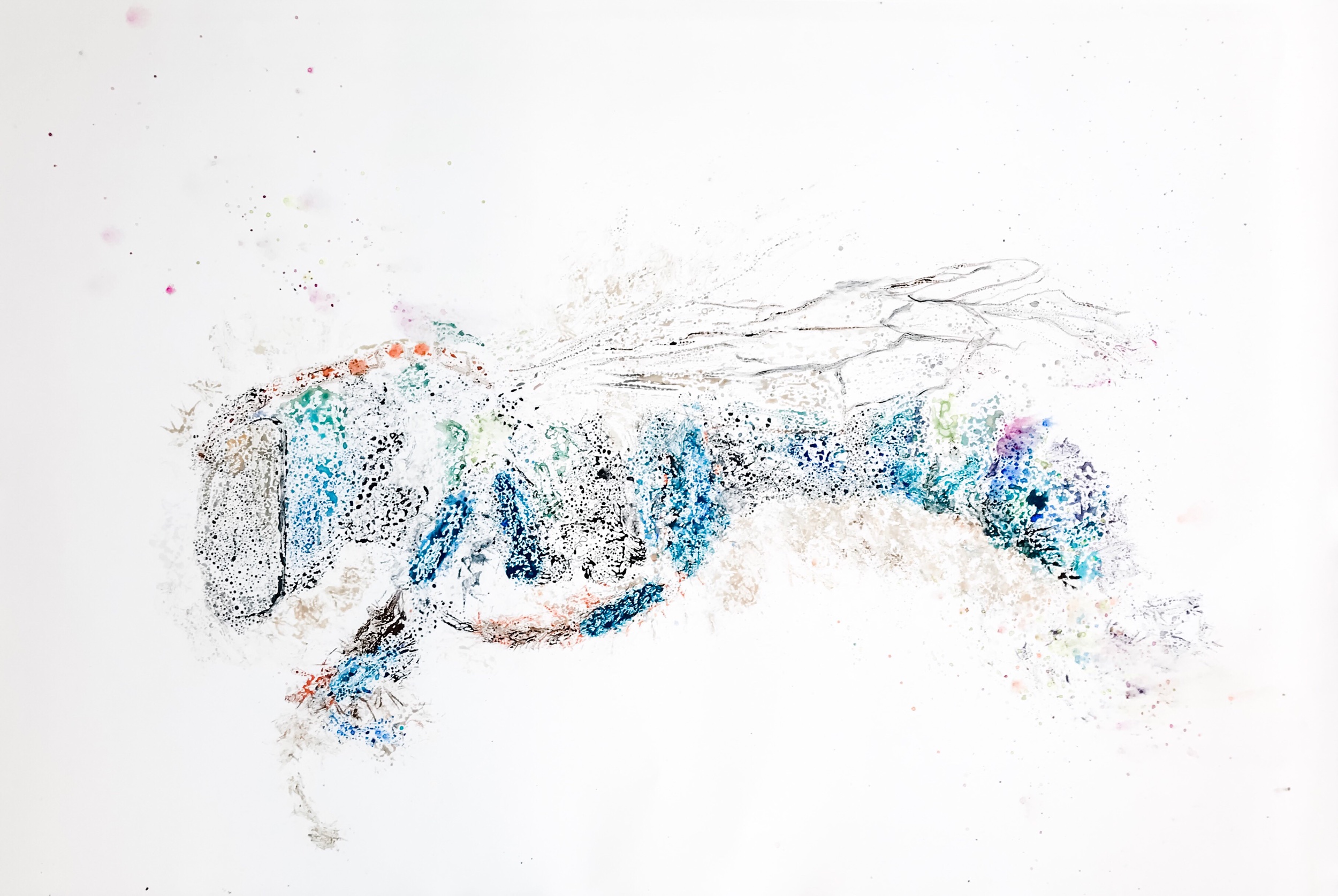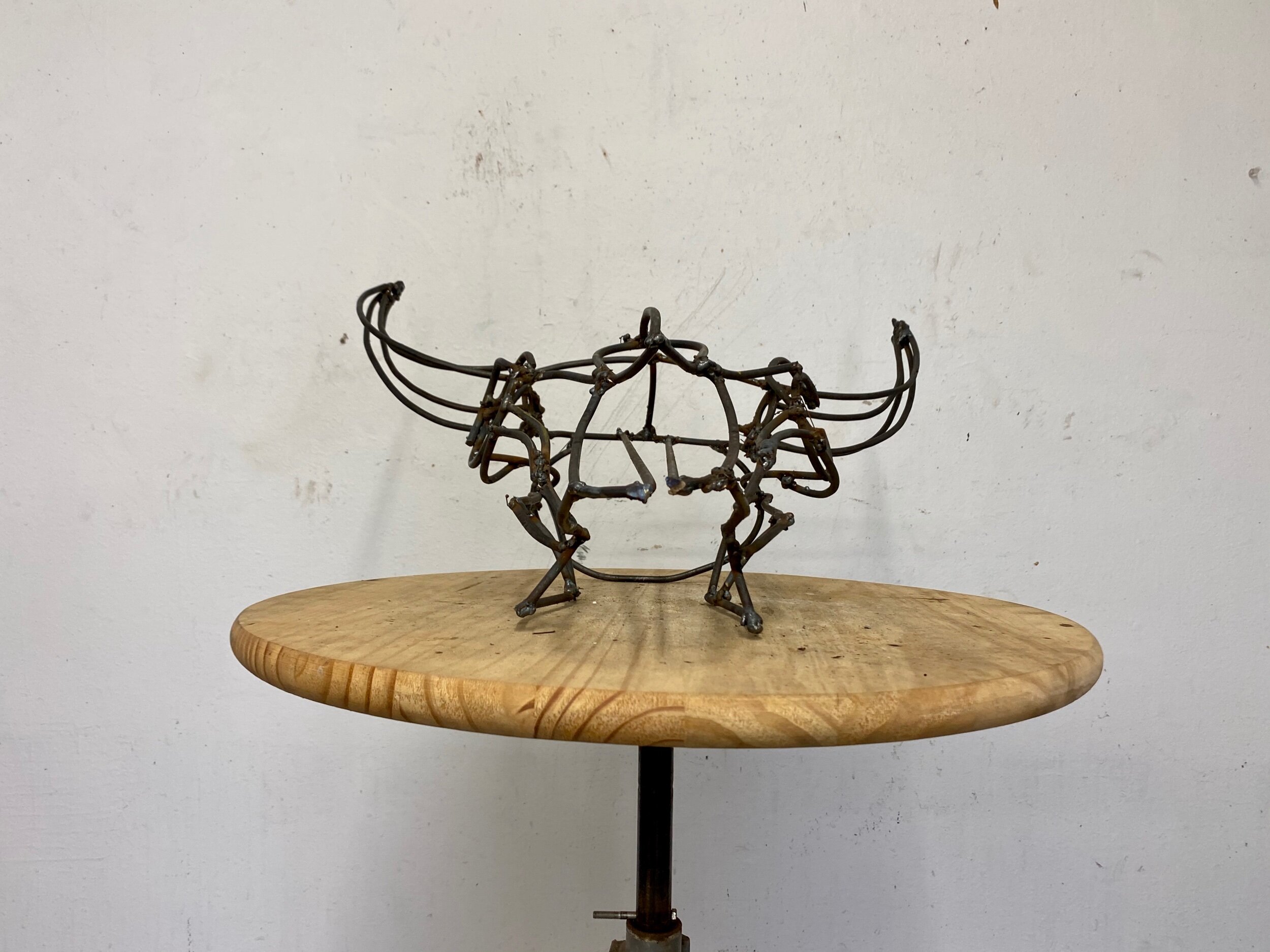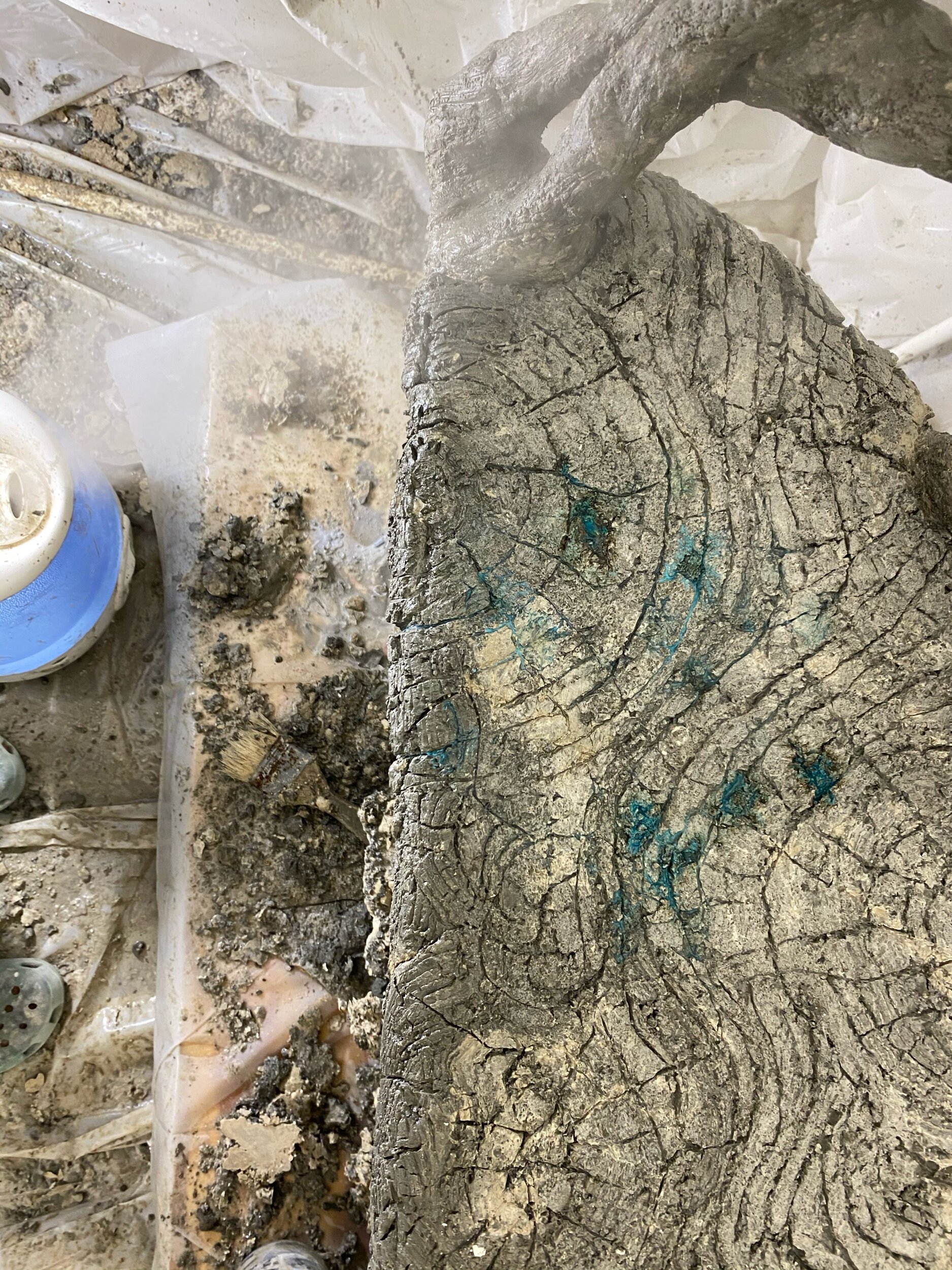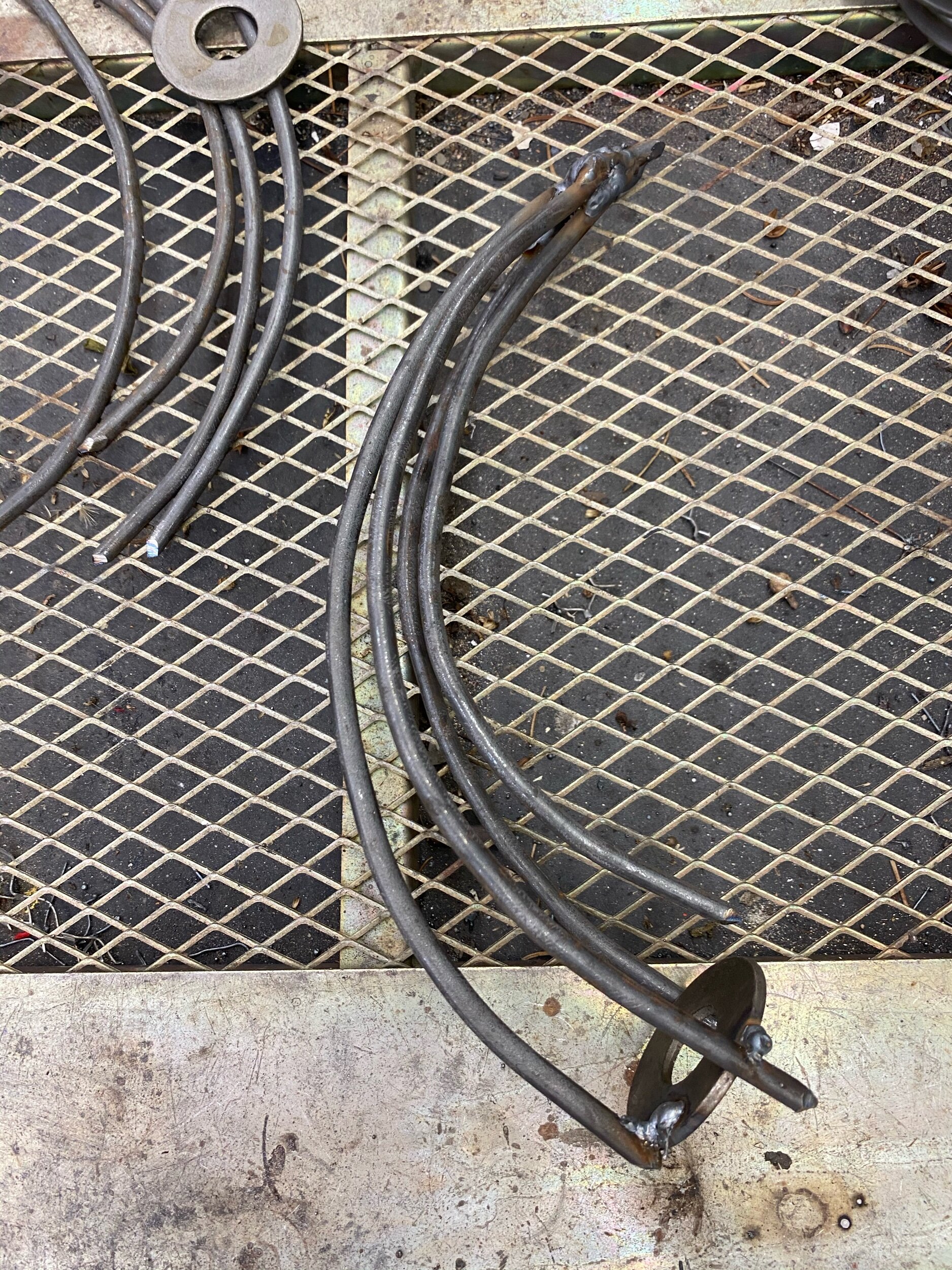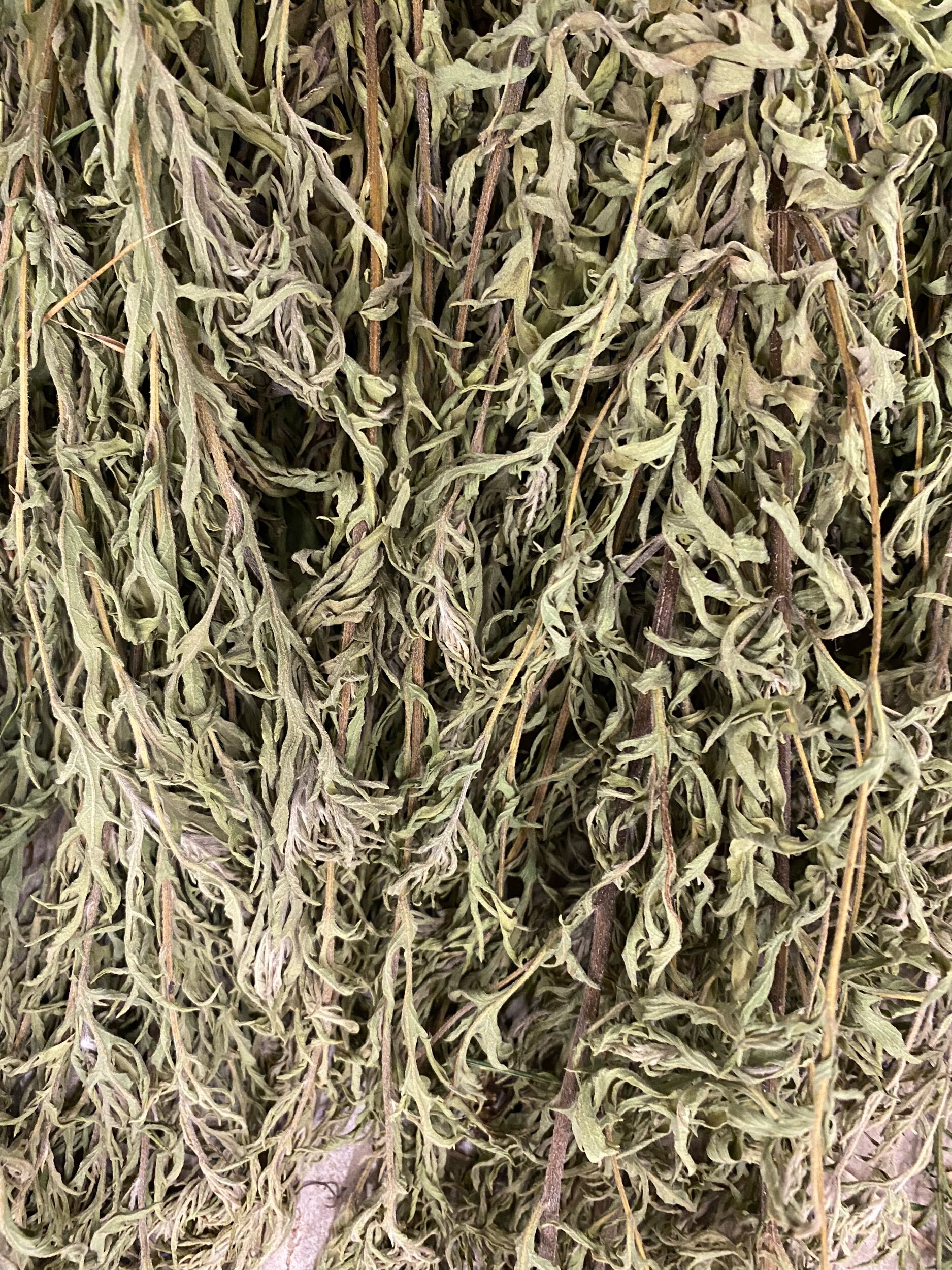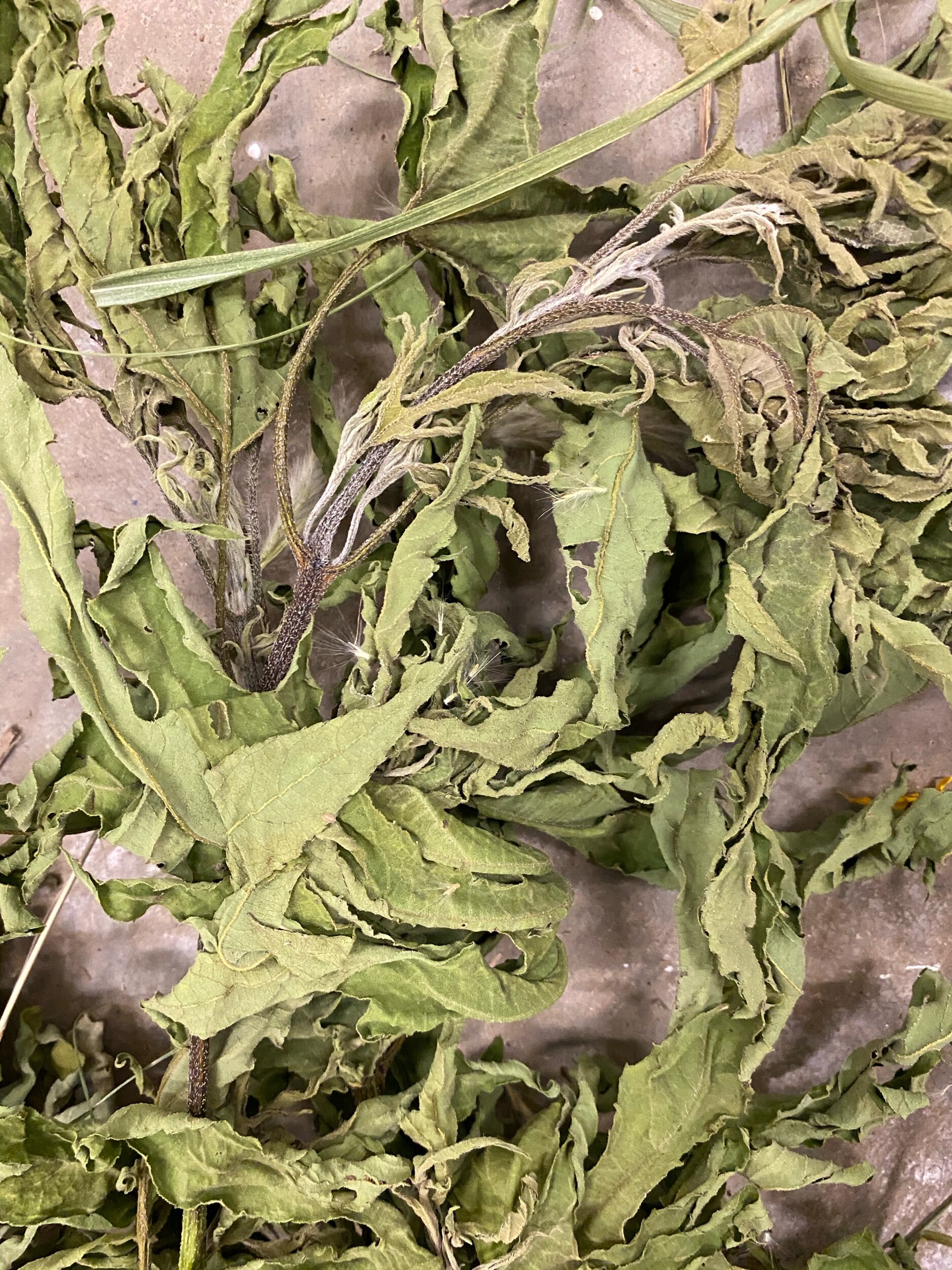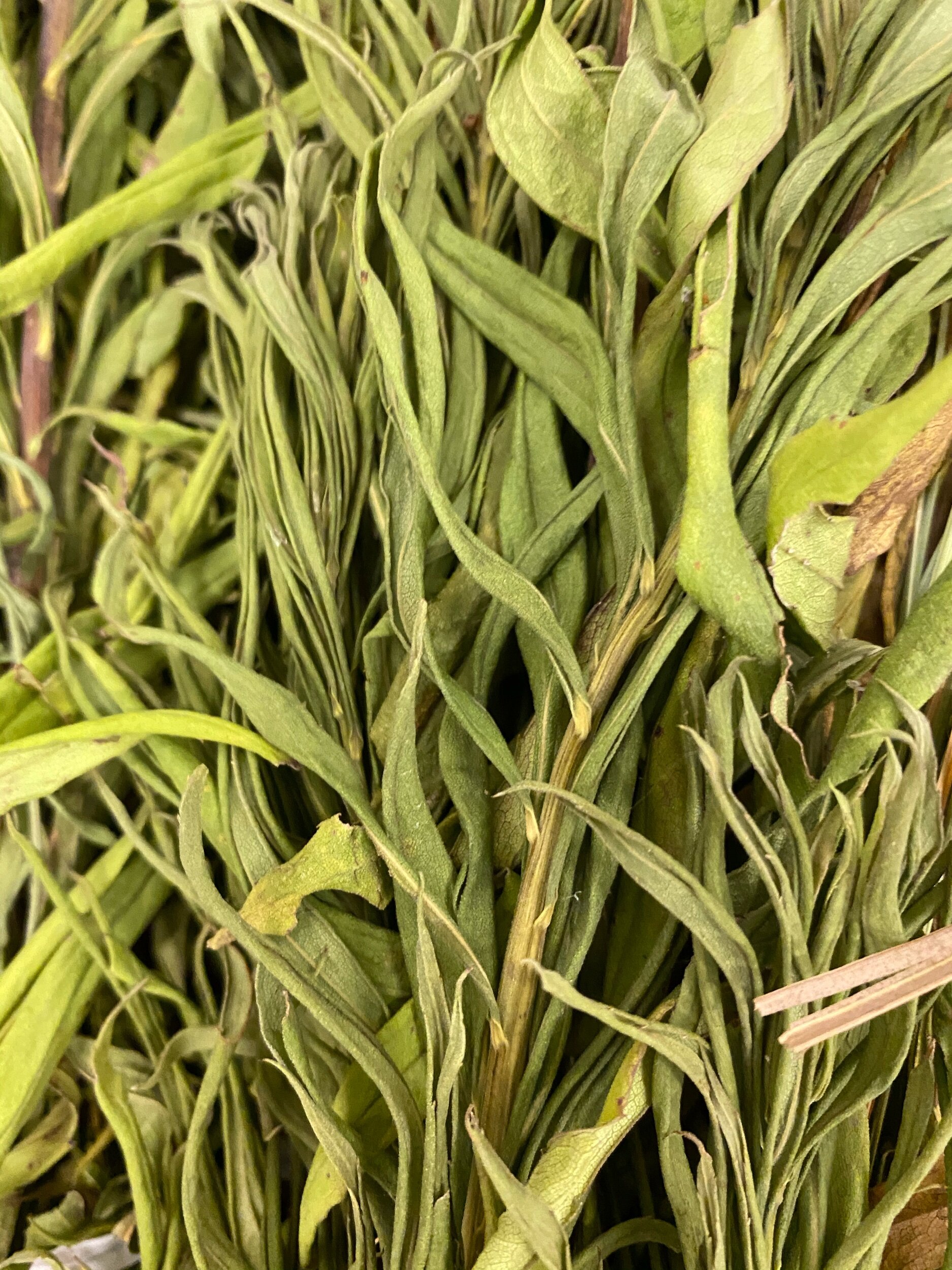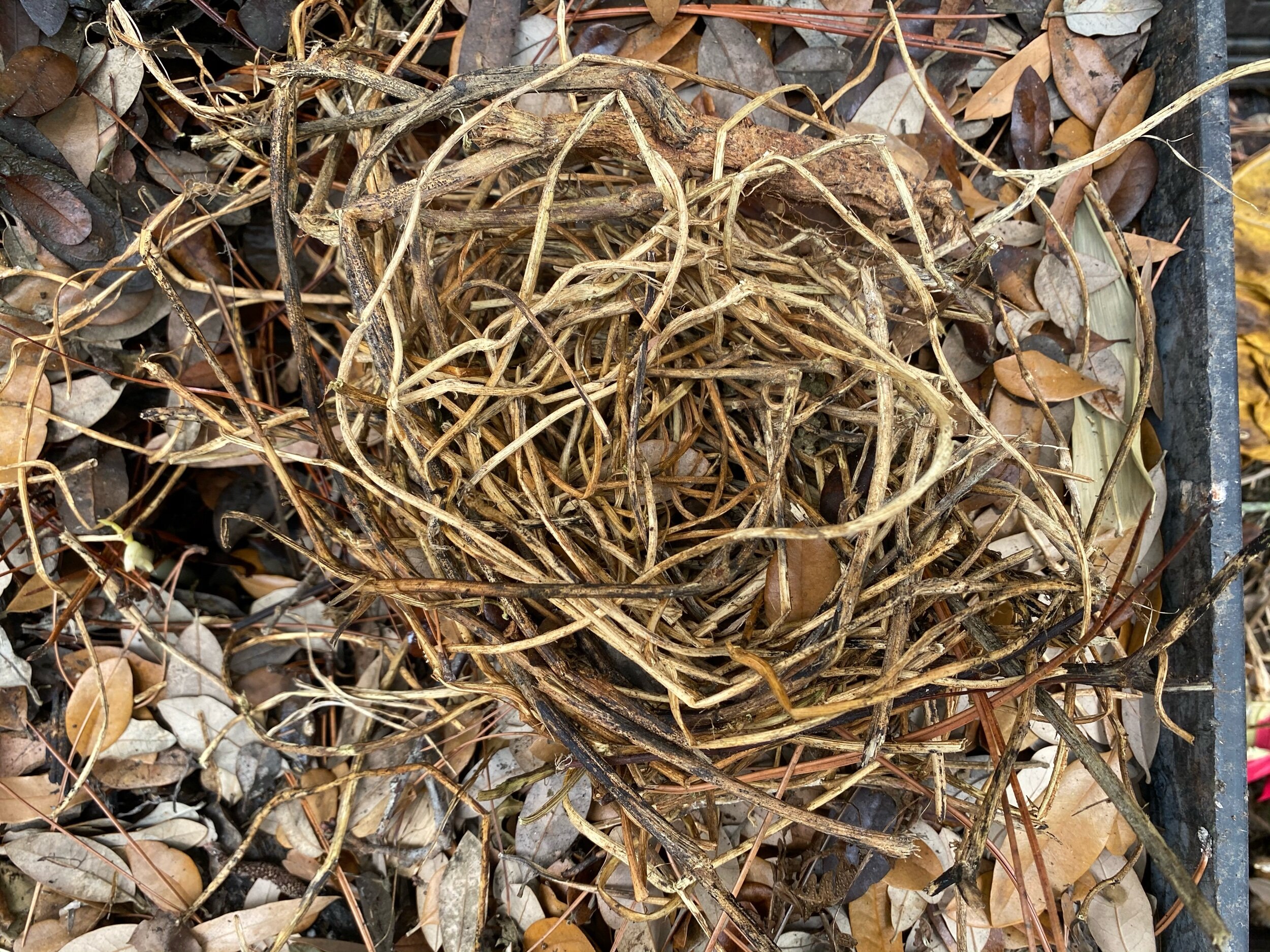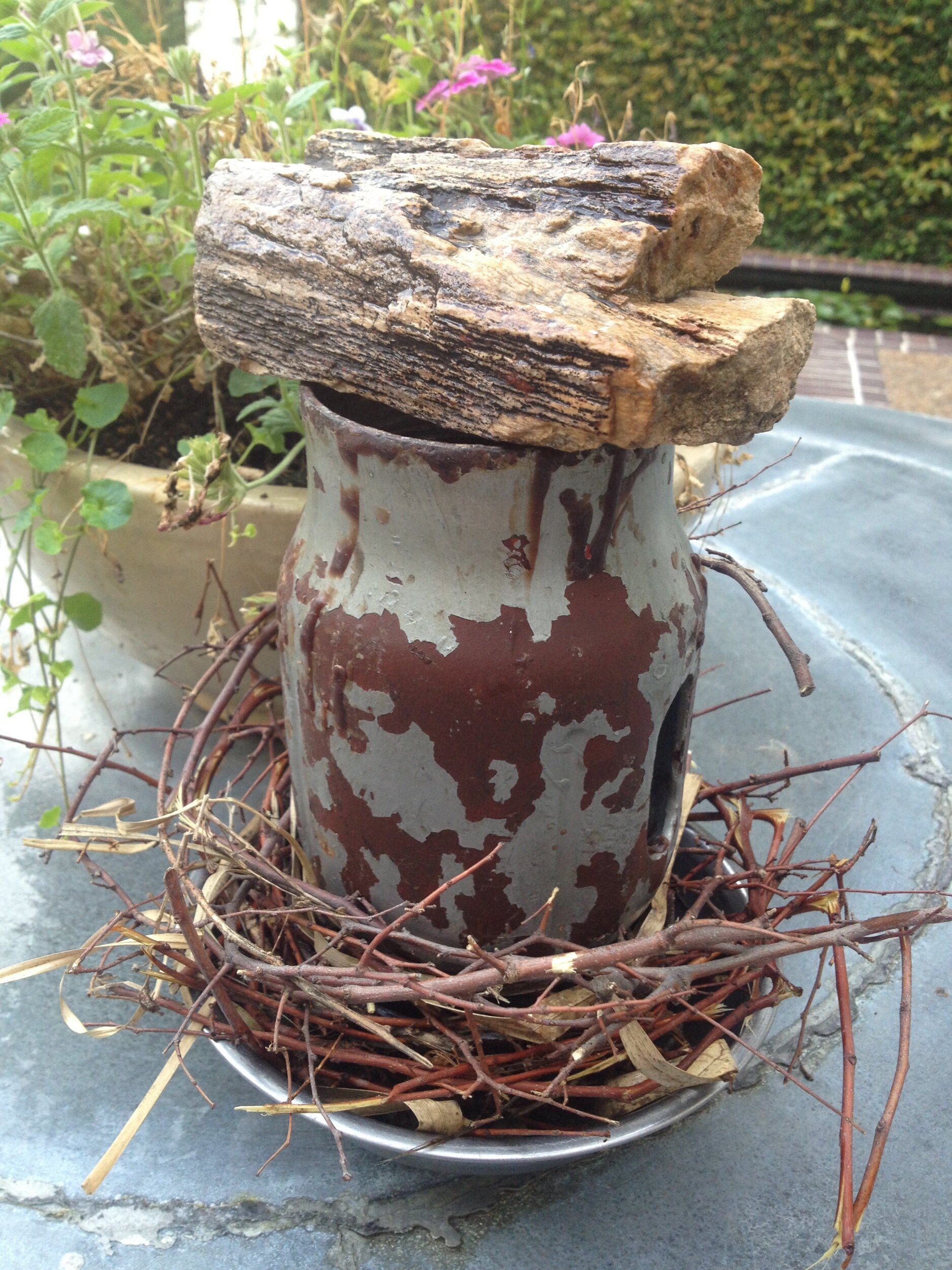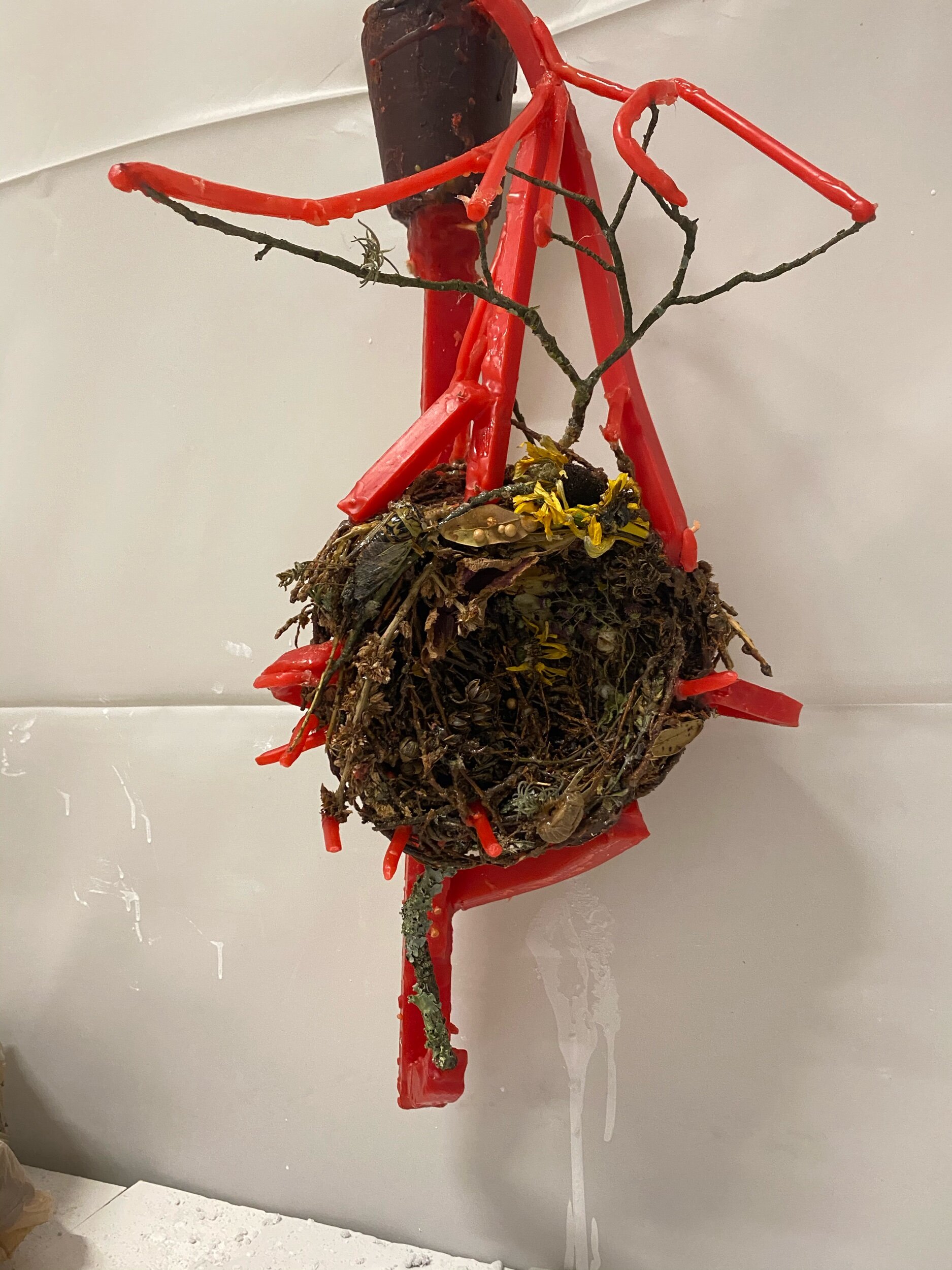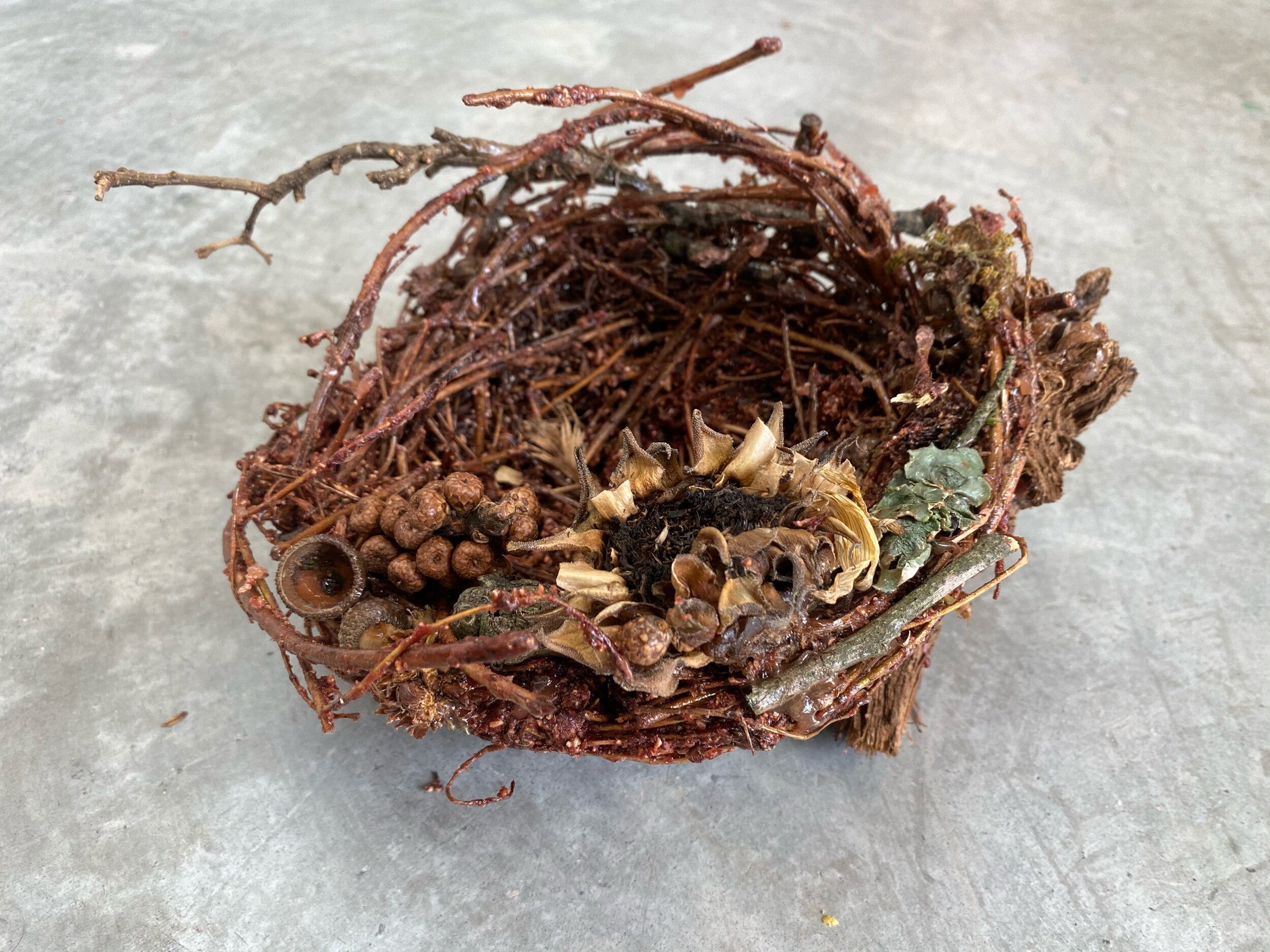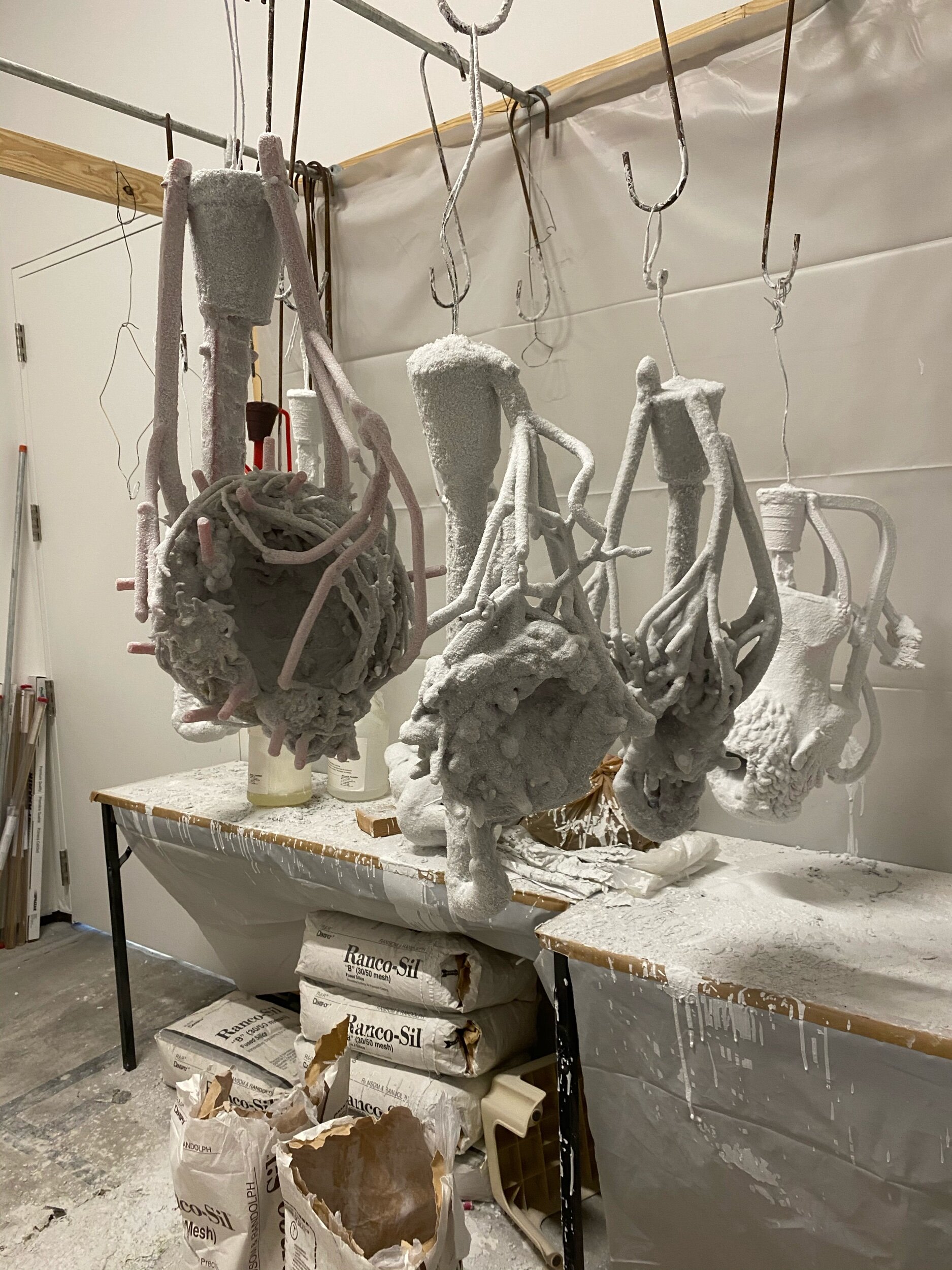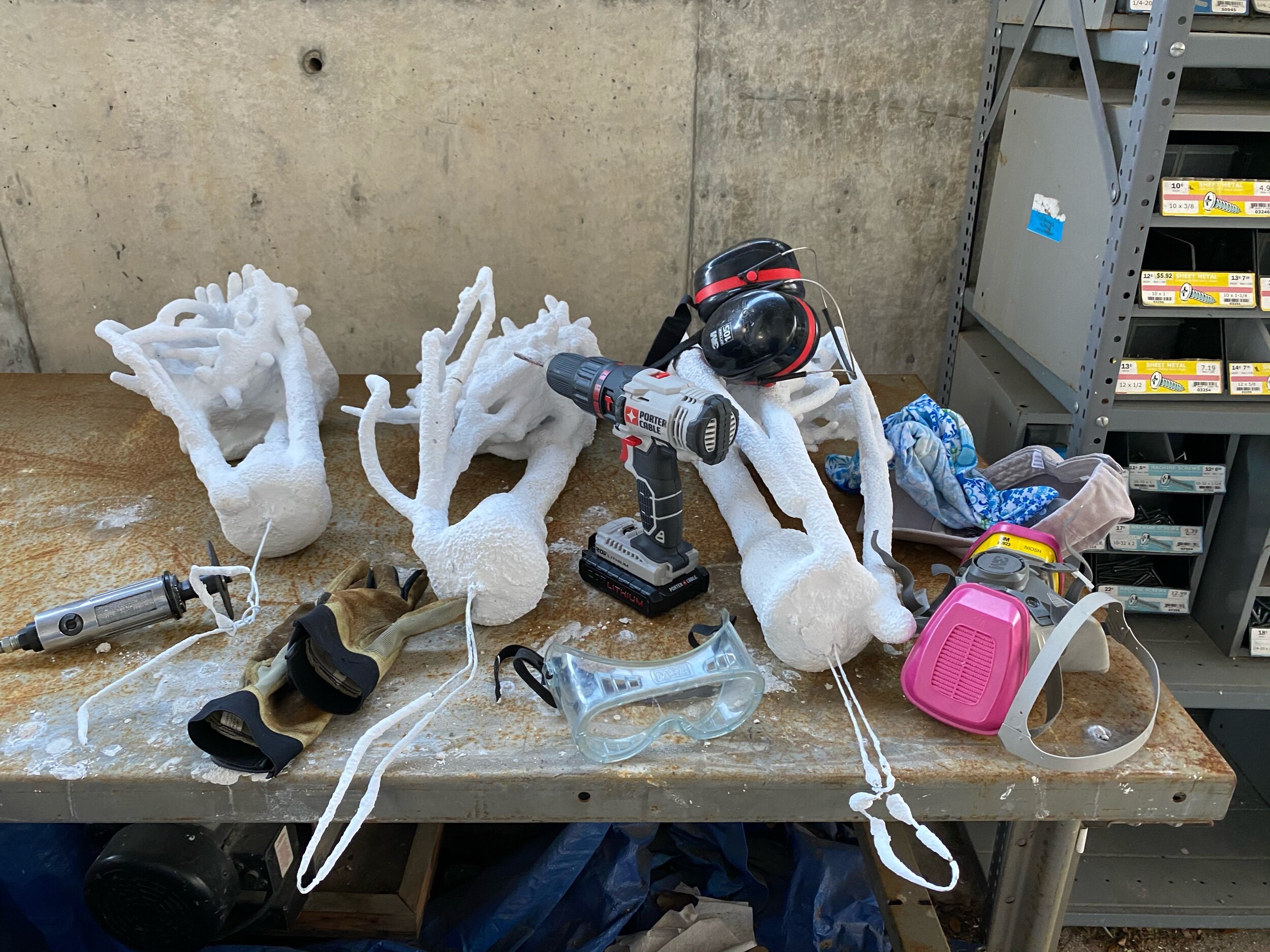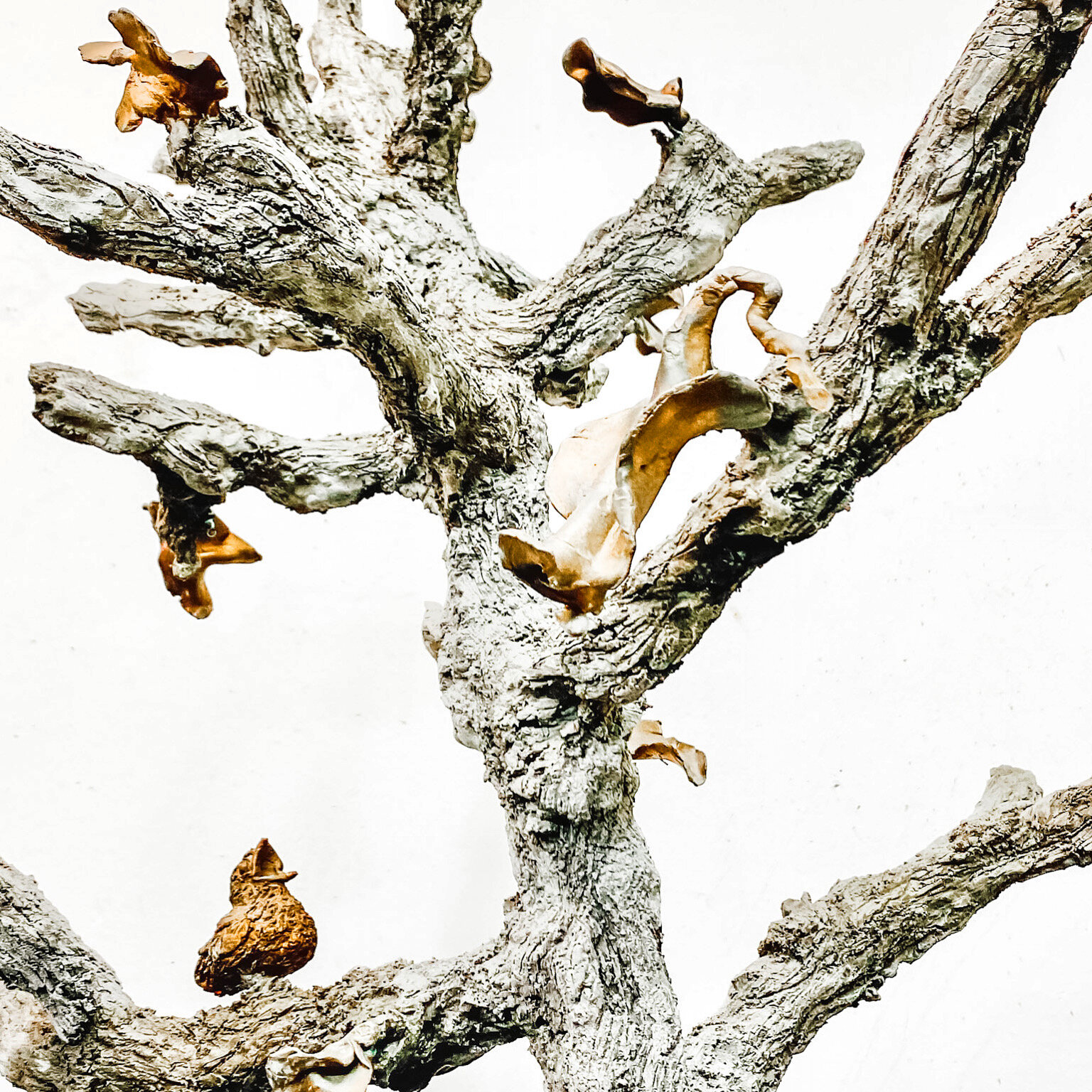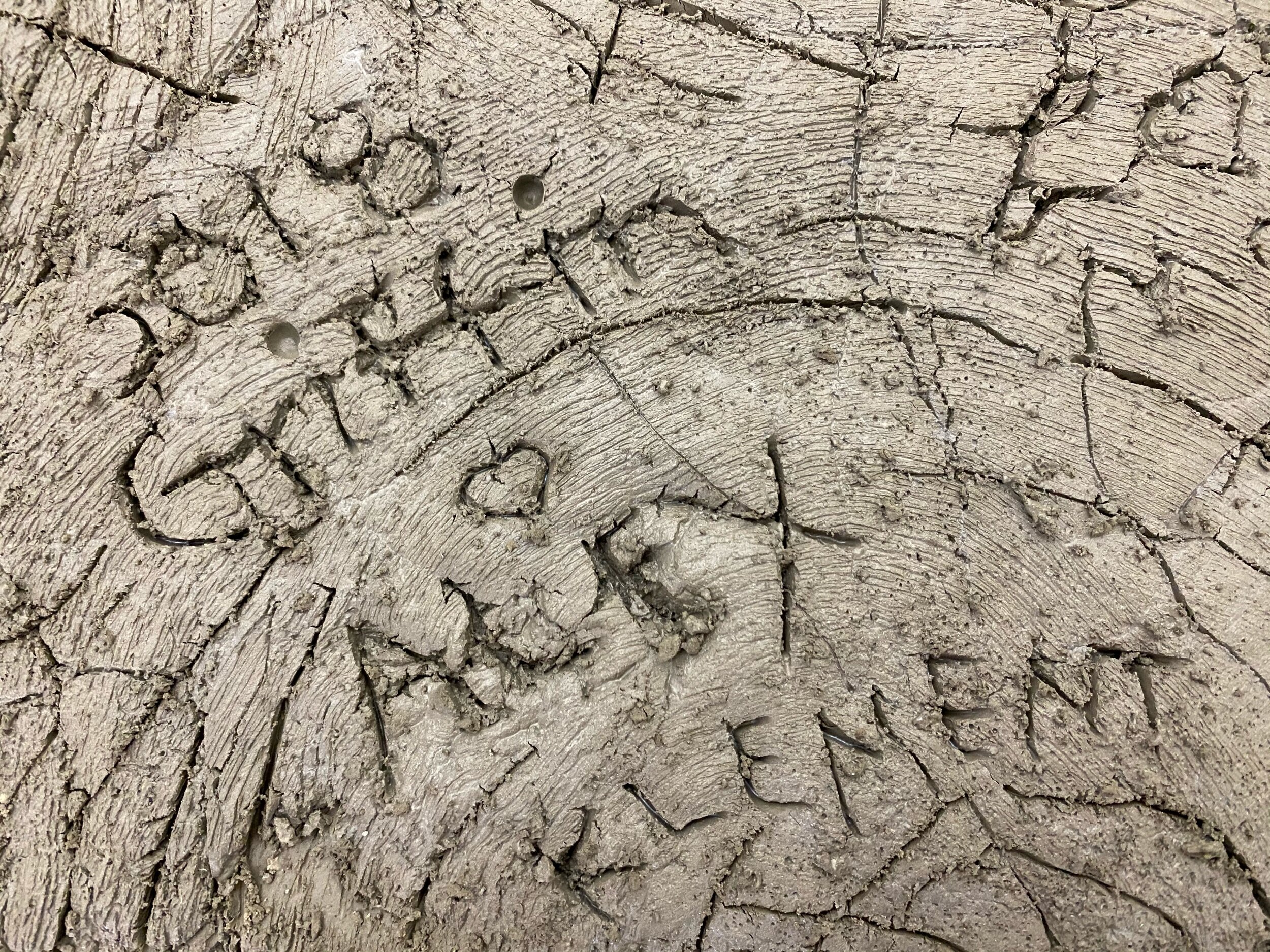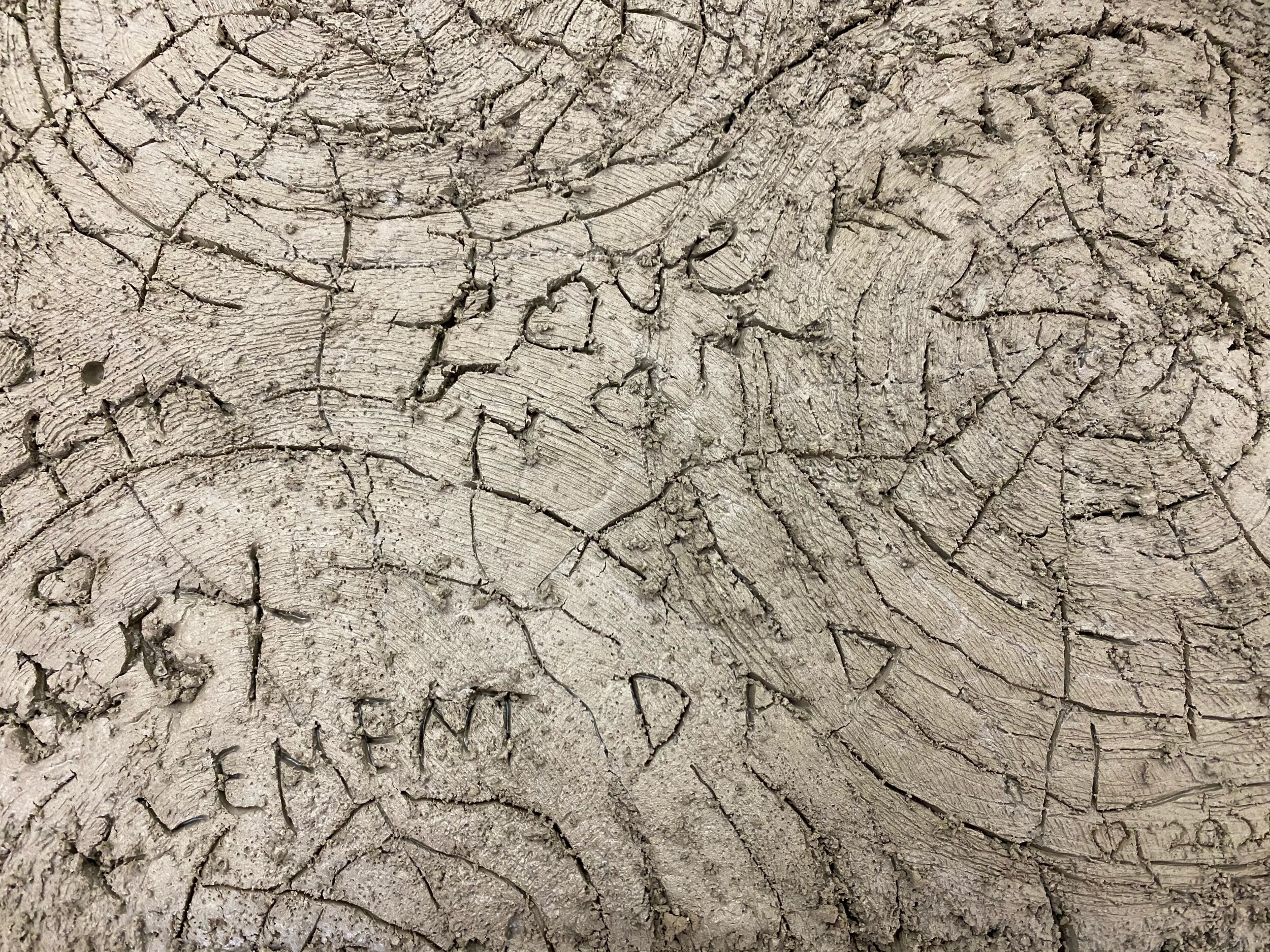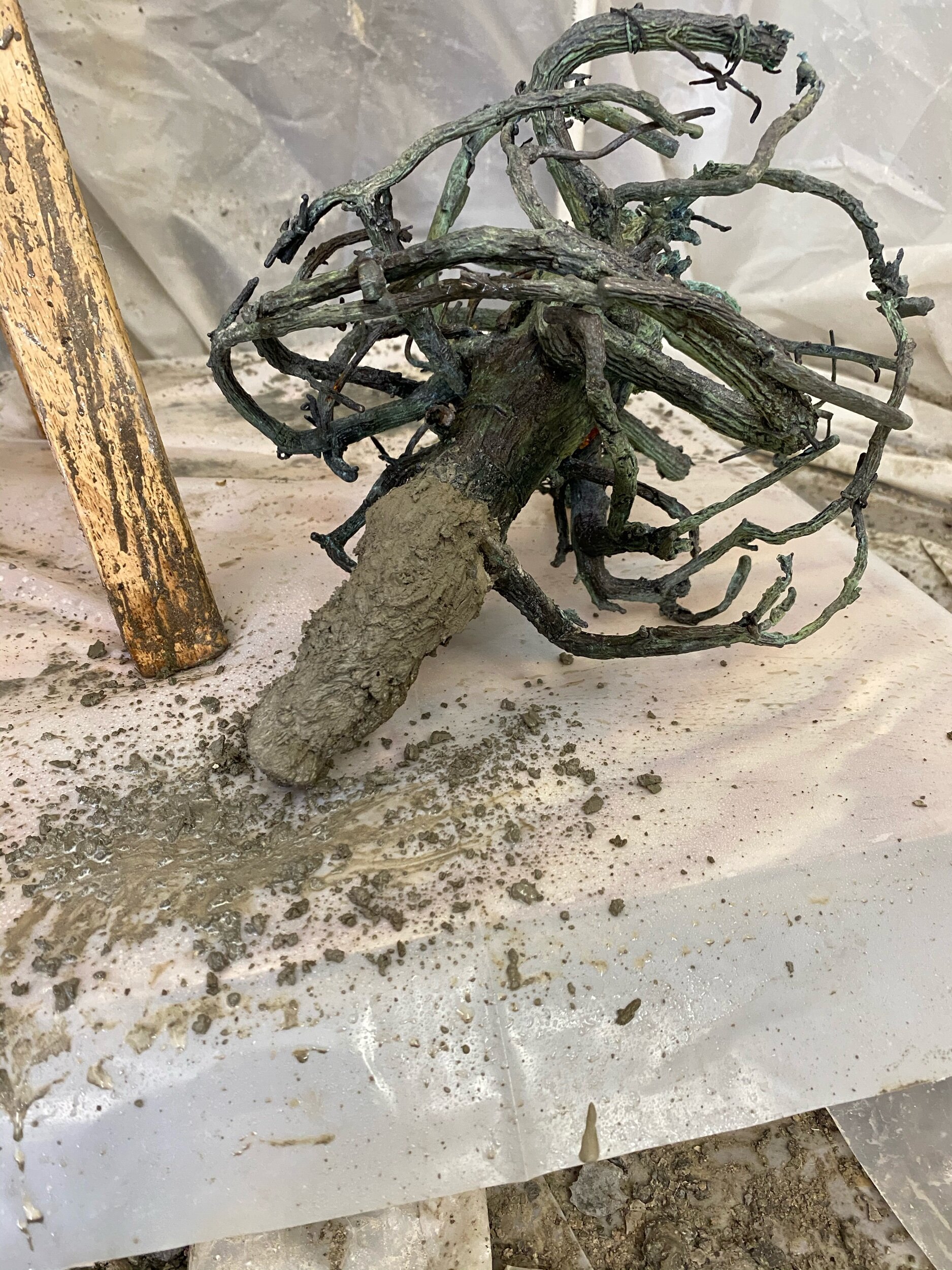My goal for this piece is to embody joy, celebrate life, be complex yet straightforward, and have moments of imperfection.
I will attach to the wax sculpture red wax channels (sprues) and a brown wax cup.
Below the piece is sprued up and ready to dip.
The dipping process builds layer by layer a ceramic shell around the sculpture and sprues. Once the Shell is built I will burnout the wax leaving a hollow cavity to pour the bronze in.
Dip 1 Slurry only
Final coat 24 hours after drying
Cutting the top of the cup and drilling holes to help the expanding gases escape when the wax is burned out.
The piece is now ready to be fired. The firing will harden the shell and melt out the wax sculpture, leaving the cavity for the bronze to be poured into. The wire sticking out will fall out when the wax is burnt out.
We poured the bronze into the shells last night. Now that the shell is cool it is time to break it off and see how it turned out.
the pour-
my shoulder has taken all the pounding it can. I will have to get help to finish breaking off the shell.
In the below images all the metal work is done and the piece is ready to patina.
Adding the white marble patina
